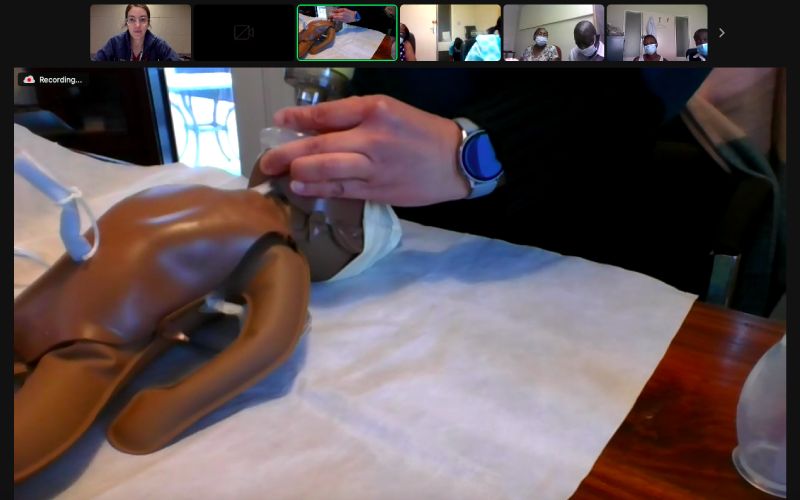During the height of the COVID-19 pandemic, teleconferencing platforms provided a way to deliver critical neonatal resuscitation training around the world, a practice that has been shown to decrease stillbirth rates and reduce neonatal mortality. The silver lining was that the rise of these technologies offered a way to expand training opportunities in low-resource settings around the globe.
Despite online conferencing now being a commonly used tool, there can still be challenges to overcome when utilized for skills training. The American Academy of Pediatrics (AAP), in partnership with Laerdal Global Health, recently devised a new online training platform to help overcome some of these barriers. NewYork-Presbyterian/Weill Cornell Medicine neonatologists Emily Ahn, MD, and Jeffrey Perlman, MB, ChB, were involved in a pilot study testing this program that included training remote newborn resuscitation facilitators in Africa to provide this traditionally hands-on training in a virtual format. The remote facilitator provides virtual training to any providers who assist in births, teaching them how to recognize neonates in distress and perform resuscitation. Dr. Ahn, Dr. Perlman, and their colleagues recently shared their best practices for training these facilitators virtually in a perspective article in the journal Children.
Below, they share six tips for remote facilitators on establishing videoconference skills, developing strategies to keep participants engaged, optimizing videos for skills demonstration, overcoming language barriers, and pre-course planning.
Troubleshoot Tech Before the Call
While many people are comfortable using a videoconference technology like Zoom, they might not have experience being the conference leader, which may involve recording, sharing the screen, and admitting participants.
Utilizing a video conferencing skill checklist can ensure remote facilitators are competent to start a training session. This includes keeping the chat function open, ensuring that screen share is working appropriately, and annotating the screen as appropriate.
Use a Separate Messaging App
It can be a challenge to keep participants engaged in a hands-on training when their teacher is on a video screen. Dr. Ahn and Dr. Perlman suggest using group chats on separate messaging apps to share materials and build a personal connection. Maintaining contact with participants on a messaging app is also helpful if the videoconferencing connection is lost or unstable during training.
Other engagement strategies include scheduling extra time for introductions or ice breakers, utilizing videoconferencing reactions, and adding poll questions.
Focus on Camera Angles
Since the training involves demonstrating skills on a mannequin, camera angles are critical. The article underscores the importance of using an adjustable camera, such as a phone, laptop, or detachable webcam to allow for multiple views of the skills demonstration. Another best practice is to “spotlight” the demonstration video so that it is the largest image on everyone’s screen regardless of who is talking.

Remote facilitators learn how to teach bag-mask ventilation through video conferencing.
Be Prepared for Language Barriers
When training individuals based in other countries, language barriers are bound to surface. To overcome these challenges in communication, facilitators should identify barriers prior to the training and evaluate potential solutions, such as real-time closed captioning in the native language or an on-site translator. If those options are not available, the facilitator should be sure to speak slowly and clearly and build in room for comprehension checks.
Know the Material Thoroughly
But the most important advice Dr. Ahn gives to remote facilitators is to do their homework. Even though they know the clinical material, they need to be prepared for the challenges of virtual training. “The idea is to not just give the information but make people comfortable and competent with the material. To do that effectively, we need to harness these skills of virtual teaching,” she says.
Don’t Forget About Offline Relationships
Teleconferencing platforms offer enormous potential to expand capacity for neonatal resuscitation, says Dr. Perlman. But he cautioned that these types of programs work better when they build on existing relationships, often set up in person. Once that relationship is established, then you can move training to Zoom.





